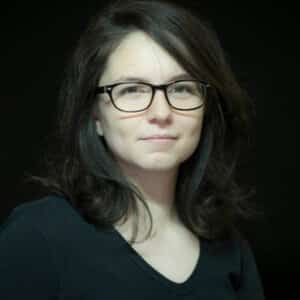A photo in nostalgic tints, showing an artist’s hand sketching a mountain goat, is suspended mid-air at a hilltop estate populated with brick buildings. One hardly notices the metal frame that keeps the print in place, level with the espaliered fruit...



